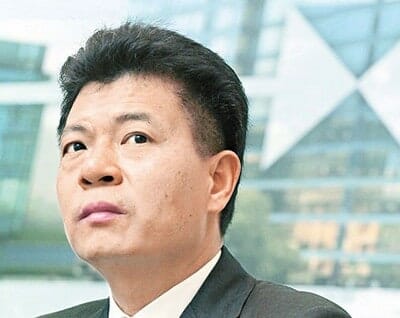
Kaisa chairman Kwok Yingshing is figuring out who he needs to pay first
“Collapse.” “Bloodbath.” “Buckled under its debts.”
Troubled China real estate developer Kaisa Group Holdings defaulted on $52 million of interest payments on offshore bonds worth $800 million over the weekend, and the news accounts have been letting us know that it’s the financial end of days for the country’s property industry, if not for the region’s bond markets.
But what if the Shenzhen-based developer, which earlier this month won back the right to sell units at some of its biggest properties, is just practicing aggressive financial management as it uses its newly restored cashflow to start paying down its most urgent liabilities?
A Failed Restructuring and a Final Default
Kaisa’s default, which was revealed in an announcement to the Hong Kong stock exchange dated Monday, is the moment that many investors have been fearing since the company first fell into technical default on a commercial loan on January 1st. Since that time, the privately owned developer has struggled to keep creditors at bay while negotiating a rescue by rival firm Sunac Holdings.
In March, Kaisa’s offshore bondholders rejected a proposal by the company to restructure its bond obligations by lowering coupon payments and extending the term of the company’s notes by five years.
All of this distress was triggered, not by China’s market downturn, but by conflict with the Shenzhen government which led the authorities to freeze sales at 11 of the company’s projects.
At this point in Kaisa’s financial saga, however, the default may be more a sign of rebuilding than of collapse.
Thawing Out After a Four-Month Freeze
Kaisa’s dispute with the government, which allegedly was over illegitimate land purchases by the developer via a now-deposed local official, was largely resolved earlier this month as sales were partially restored at seven of the company’s Shenzhen projects.
Former chairman Kwok Yingshing returned to his post shortly thereafter, and the proposed sale to Sunac seems to have been cast aside at virtually the same moment.
Now, however, Kaisa still faces the challenge of digging itself out from under a mountain of debt that piled up during the more than four months that the company’s cashflow was restricted by the government freeze.
And the first rule of handling a tight cashflow situation is never pay anyone that can’t shut you down.
Finding Out Where You Stand in the Creditor Hierarchy
No official announcements have been made concerning the restoration of Kaisa’s sales, the status of the Sunac buyout attempt, or how the company will resolve the more than 70 court actions filed against it by domestic creditors.
However, the plan appears to be that Kaisa will work off its debts under its original management, and that means taking care of obligations in the order that they need to be resolved.
During the same week that Kaisa’s projects were released by the government, the company received a RMB 1.38 billion ($222 million) lifeline loan from a subsidiary Sino-Life, a giant insurer that belongs to the Shenzhen government and happens to the developer’s second-largest shareholder.
But in case bondholders thought that cash would go to meet the interest payments over the weekend, they were to be disappointed.
Instead the loan proceeds went to make a payment to the Shenzhen government for a project site that it bought last year. Government obligations come first, because the government authorities can shut the company down if they are unhappy.
Next on the list for Kaisa will be the company’s domestic creditors, who have already effectively used the domestic courts to block the developer from doing much of anything with its projects until it works out a settlement with them.
The only real leverage that offshore bondholders have is Kaisa’s fear of the potential injury that a default could inflict on its finances. However, with the government and domestic creditors holding a gun to its head, Kaisa isn’t too worried about offshore bondholders threatening to break its thumbs.
Leave a Reply